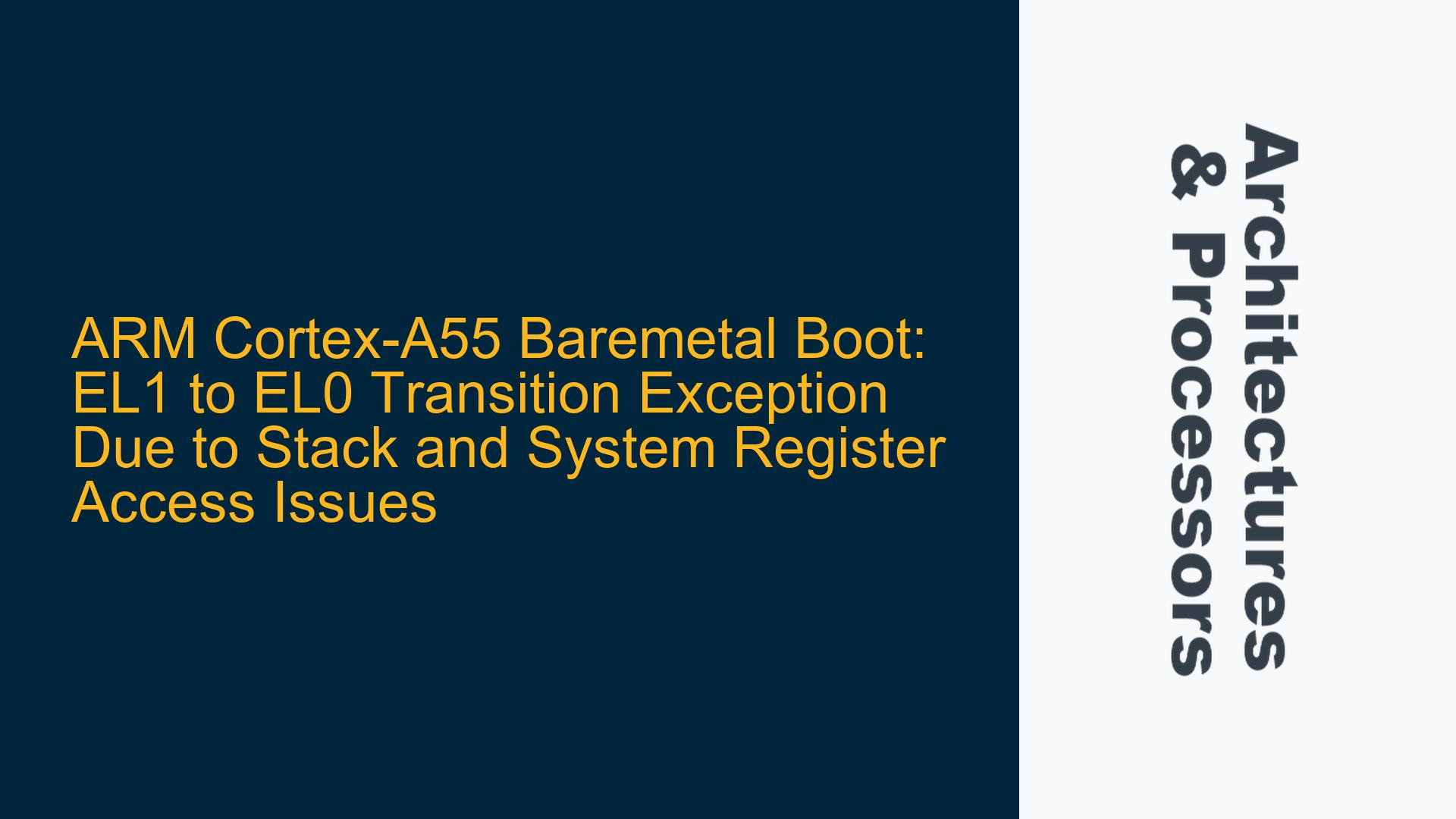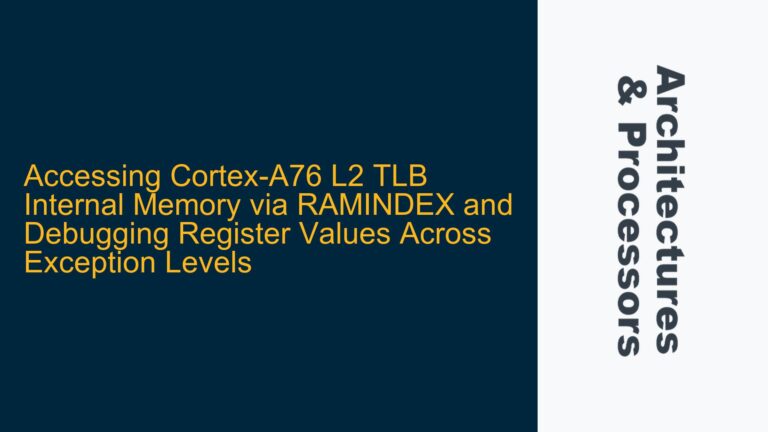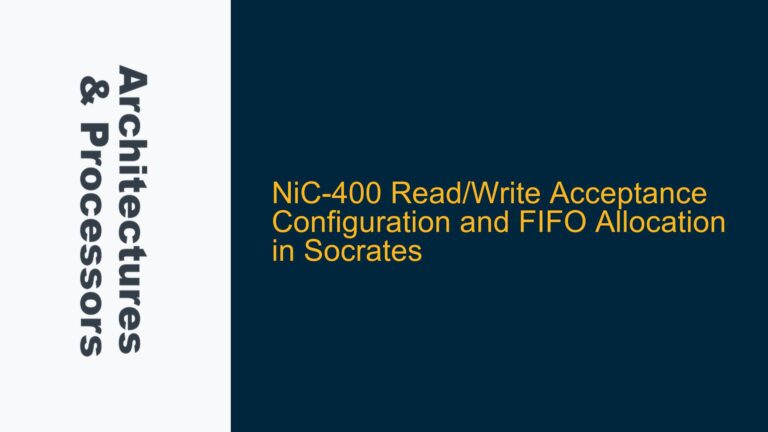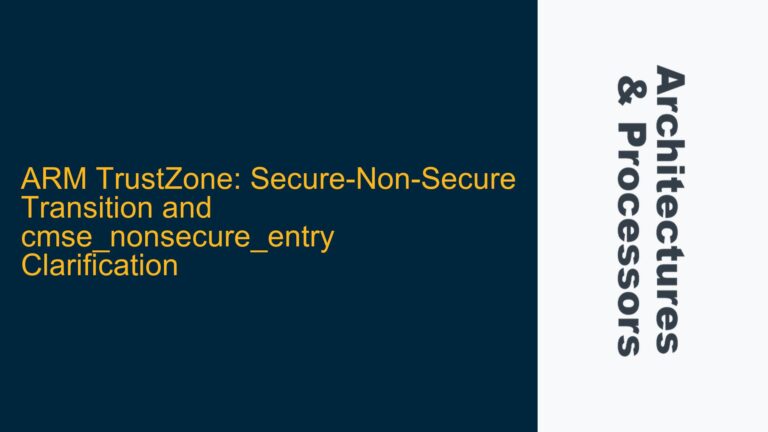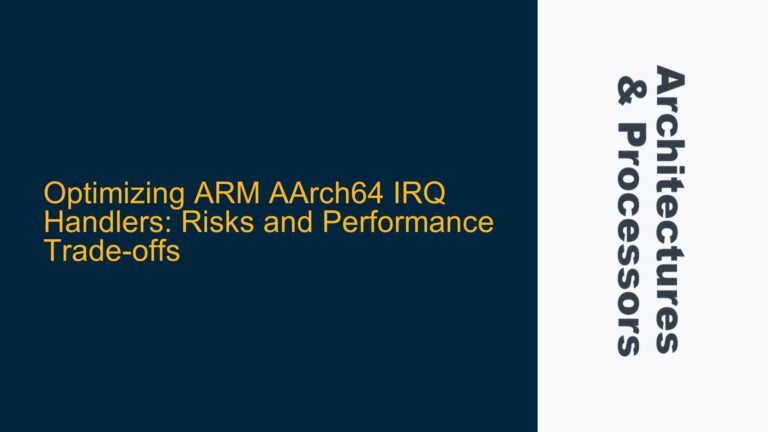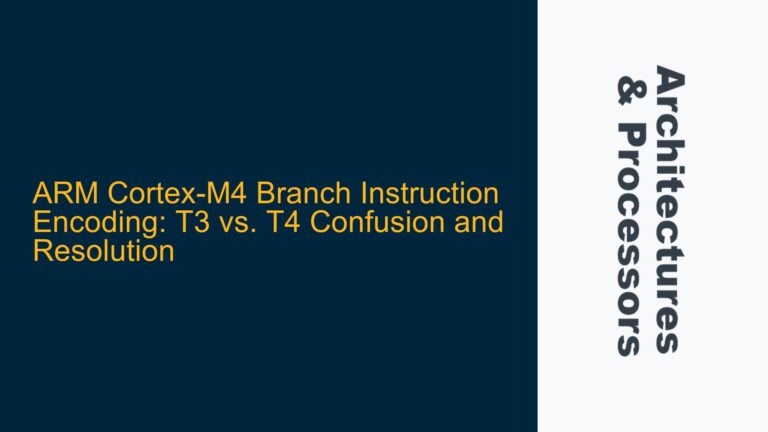ARM Cortex-A55 Baremetal Boot: EL1 to EL0 Transition Challenges
When working with the ARM Cortex-A55 processor in a baremetal environment, transitioning between exception levels (ELs) is a critical part of setting up the execution environment. The Cortex-A55, based on the ARMv8-A architecture, supports four exception levels: EL0 (user mode), EL1 (OS kernel mode), EL2 (hypervisor mode), and EL3 (secure monitor mode). A common task during boot is to initialize the system and transition from higher exception levels to lower ones, such as from EL1 to EL0. However, this transition can fail, leading to exceptions that halt the boot process.
In this scenario, the transition from EL1 to EL0 results in a synchronous exception, specifically a Data Abort, as indicated by the Exception Syndrome Register (ESR_EL3) value of 0x92000050. This error code corresponds to a Data Abort from a lower exception level (EL0), with the Instruction Specific Syndrome (ISS) field indicating a "Synchronous External Abort, not on translation table walk or hardware update of translation table." This suggests that the issue is not related to memory translation but rather to an access violation or misconfiguration during the transition.
The root cause of this issue lies in two primary areas: improper stack allocation and incorrect handling of system register access permissions. When transitioning from EL1 to EL0, the stack pointer (SP) must be correctly set up for EL0, and the system must ensure that EL0 has the necessary permissions to access the required resources. Failure to address these aspects results in the observed Data Abort exception.
Stack Allocation and System Register Access Permissions
The transition from EL1 to EL0 involves several critical steps, including setting up the Saved Program Status Register (SPSR_EL1), the Exception Link Register (ELR_EL1), and the stack pointer for EL0. The SPSR_EL1 register defines the processor state (e.g., execution mode, interrupt masks) when returning to EL0, while the ELR_EL1 register holds the return address for the eret instruction. The stack pointer for EL0 must also be explicitly set, as EL0 does not share the stack pointer with EL1.
One common mistake is failing to allocate a dedicated stack for EL0. When the processor transitions to EL0, it uses the SP_EL0 register for the stack pointer. If this register is not initialized, the processor may attempt to access an invalid memory location, triggering a Data Abort. Additionally, EL0 has restricted access to system registers compared to EL1. Attempting to access privileged system registers from EL0 will result in an exception.
The ESR_EL3 value of 0x92000050 indicates that the exception occurred due to an access violation in EL0. This is consistent with the hypothesis that the stack pointer was not properly initialized or that EL0 attempted to access a system register that it does not have permission to use. The absence of a Memory Management Unit (MMU) setup further complicates the situation, as memory access permissions are not enforced by the MMU, and all memory accesses are treated as physical addresses.
Implementing Correct Stack Initialization and System Register Handling
To resolve the EL1 to EL0 transition issue, the following steps must be taken:
-
Initialize the EL0 Stack Pointer: Before transitioning to EL0, the stack pointer for EL0 must be explicitly set. This can be done by writing to the SP_EL0 register from EL1. For example:
mov x0, #0x80000 // Example stack base address msr SP_EL0, x0 // Set SP_EL0 to the desired stack addressThis ensures that EL0 has a valid stack for its execution.
-
Configure SPSR_EL1 and ELR_EL1: The SPSR_EL1 register must be configured to define the processor state when entering EL0. This includes setting the execution mode to AArch64, enabling interrupts if necessary, and specifying the stack pointer selection. The ELR_EL1 register must point to the entry point of the EL0 code. For example:
adr x1, el0_entry_point // Load the EL0 entry point address msr ELR_EL1, x1 // Set ELR_EL1 to the EL0 entry point mov x2, #0x0 // Configure SPSR_EL1 for AArch64 EL0 msr SPSR_EL1, x2 // Set SPSR_EL1 -
Ensure Proper System Register Access: EL0 cannot access privileged system registers. Any attempt to do so will result in an exception. Therefore, all necessary system register configurations must be completed in EL1 before transitioning to EL0. This includes setting up any required control registers, performance counters, or debug registers.
-
Use the
eretInstruction: Theeretinstruction is used to transition from a higher exception level to a lower one. It loads the program counter from ELR_EL1 and the processor state from SPSR_EL1. Ensure that theeretinstruction is executed in the correct context, with all registers properly configured. -
Debugging and Verification: If the transition still fails, use the ESR_EL3 register to diagnose the exception. The ESR_EL3 value provides detailed information about the cause of the exception, including the exception class, instruction-specific syndrome, and fault address. Additionally, use a debugger to single-step through the transition code and verify the values of critical registers such as SP_EL0, ELR_EL1, and SPSR_EL1.
By following these steps, the transition from EL1 to EL0 can be successfully implemented, avoiding the Data Abort exception and ensuring a smooth boot process. Proper stack initialization and system register handling are essential for reliable operation in baremetal environments, especially when working with complex ARM architectures like the Cortex-A55.
